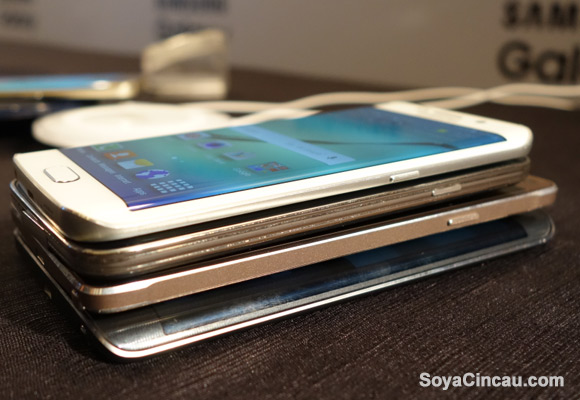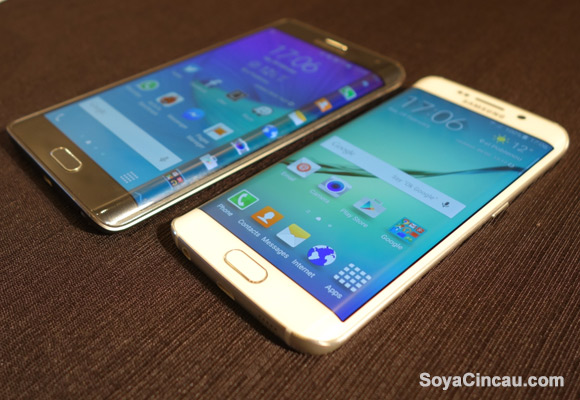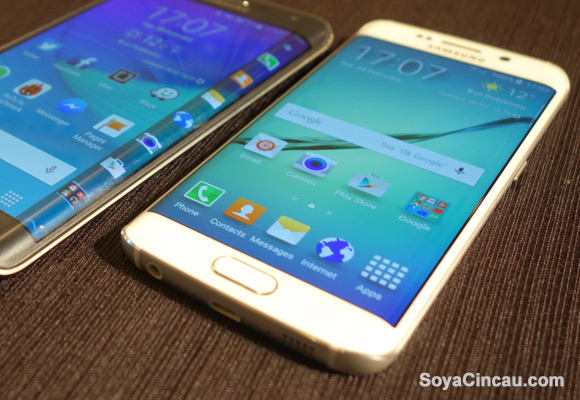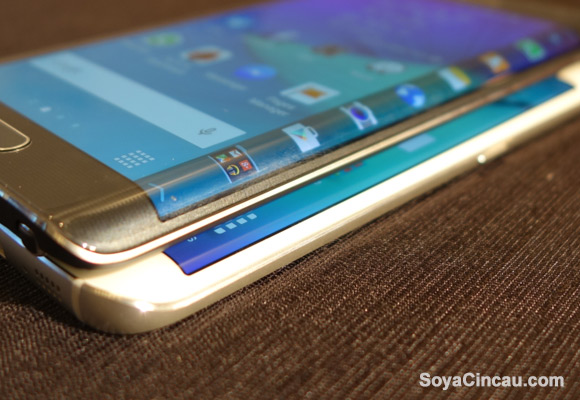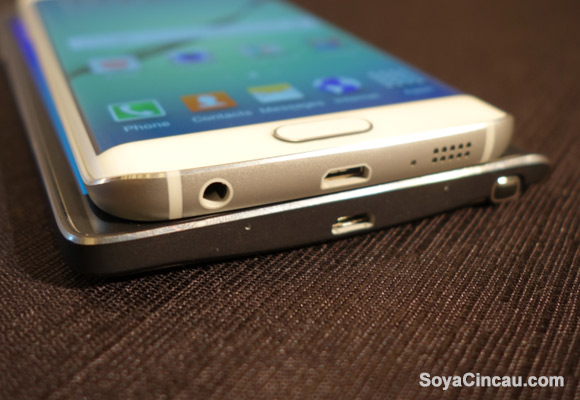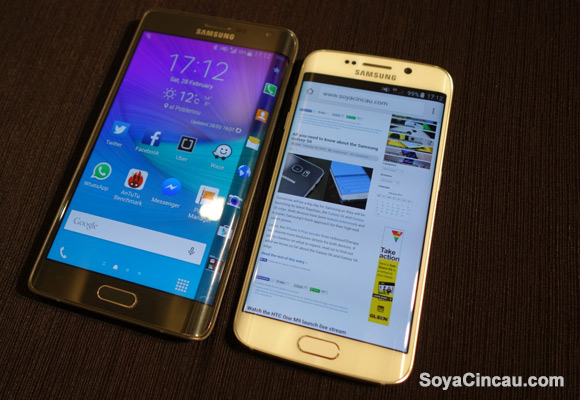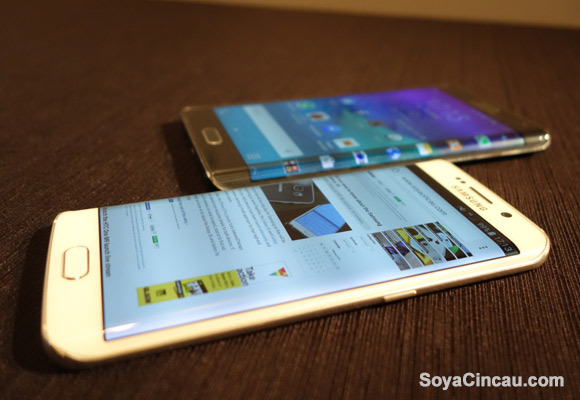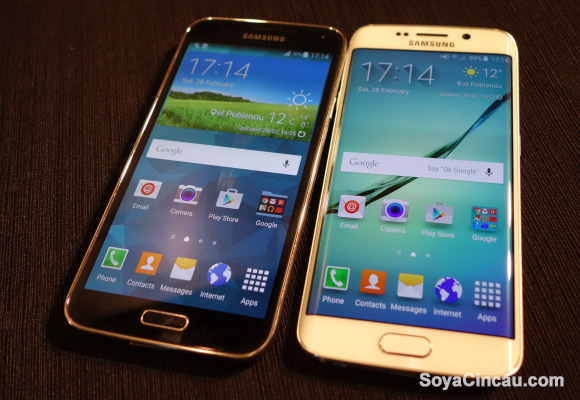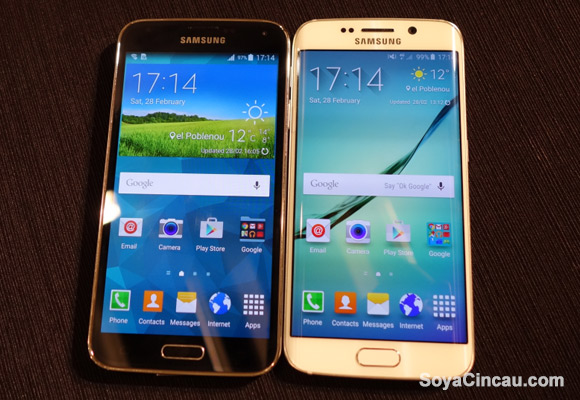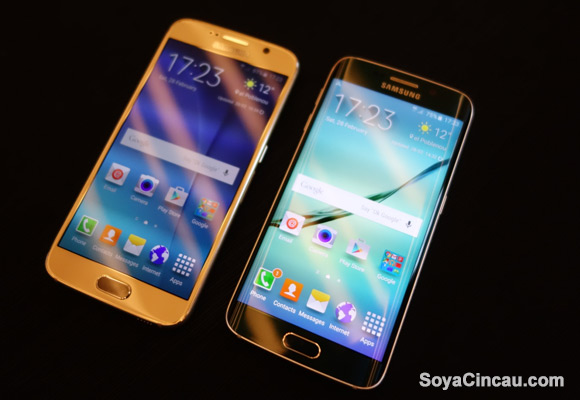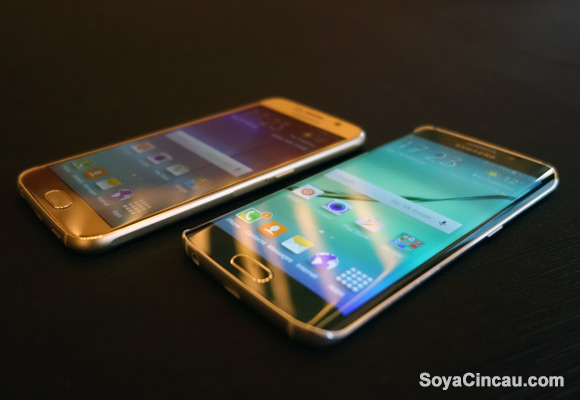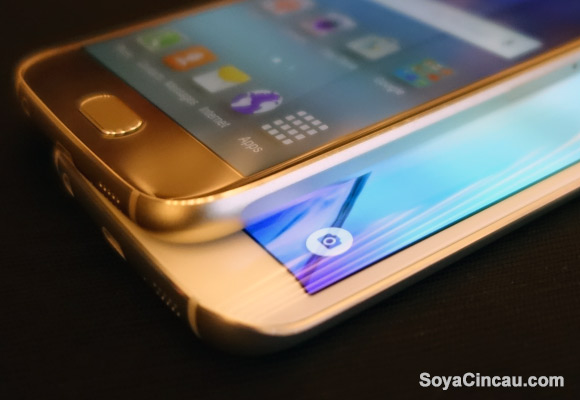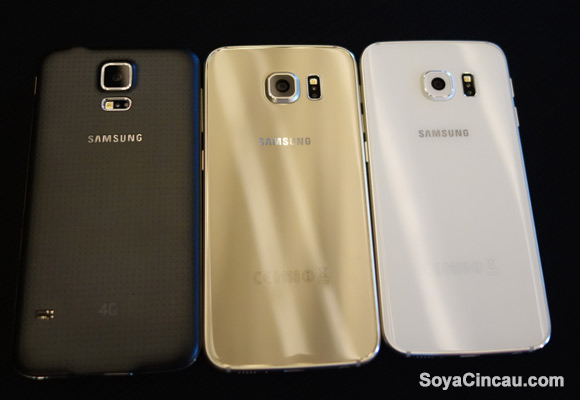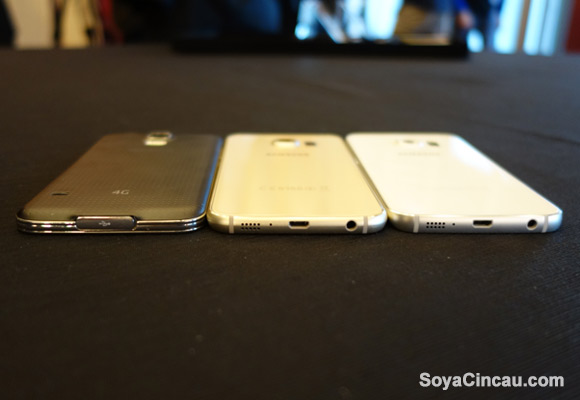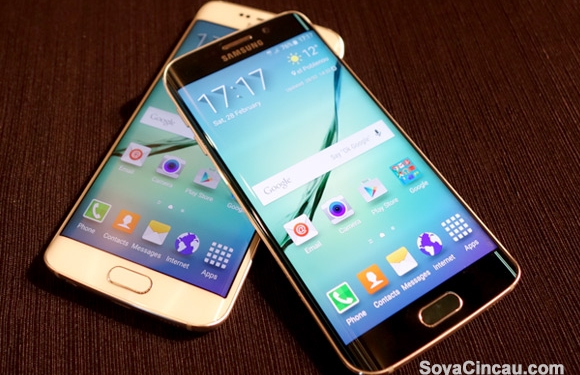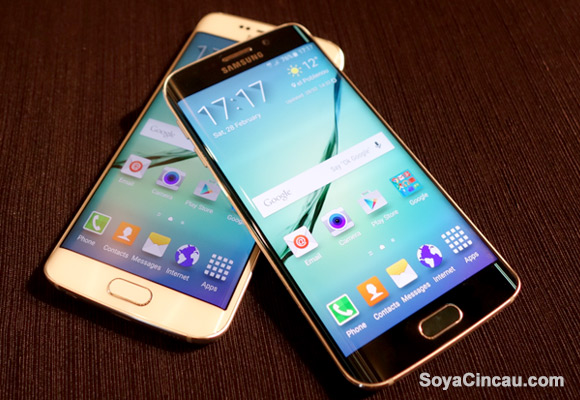Anticipation is running high for Samsung , which has been the flag bearer for Android smart phones. With mounting competition from affordable alternatives and Apple showing no signs of slowing down, Samsung is shaken to take a bold step to maintain its position.
They had taken necessary initiatives to shed its imitator image and to move up the premium game with the use of premium materials like they did with the Galaxy Alpha, Galaxy Note 4 and Galaxy A series. For the next Galaxy, Samsung had embarked on a full reboot with what they call Project Zero.
Going back to the drawing board, the Korean smart phone maker aspires to create something new, with a fresh new slate aiming to set a whole new standard for smart phones. For the exterior, Samsung experimented with new manufacturing processes to create a fresh yet stylish design, while its internals are optimised to give a superior performance with help from its own Samsung subsidiaries.
The result, is the new Samsung Galaxy S6 and its display technology showcase model, the Galaxy S6 edge.
Samsung Galaxy S6 & S6 edge Hands-on Video
Design
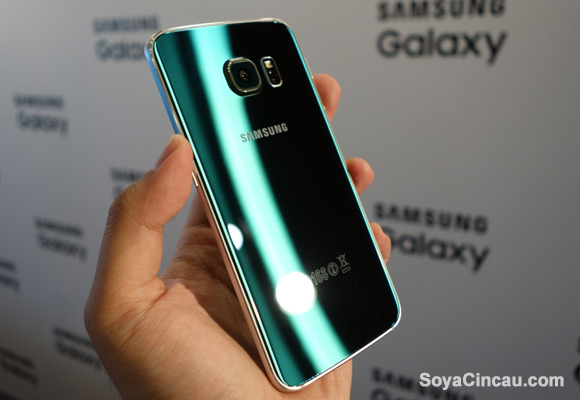
The new Samsung Galaxy S6 and S6 edge are stunningly beautiful. At first glance, the metal frames and all glass exterior does remind you of an iPhone but upon closer inspection, it looks and feels much more refined, plus the colour options of the device makes it stand out from the typical black and white slabs in the market. Samsung has definitely stepped up in the design department and the new model looks years ahead from the Galaxy S5 which looks ridiculously cheap when put side by side.
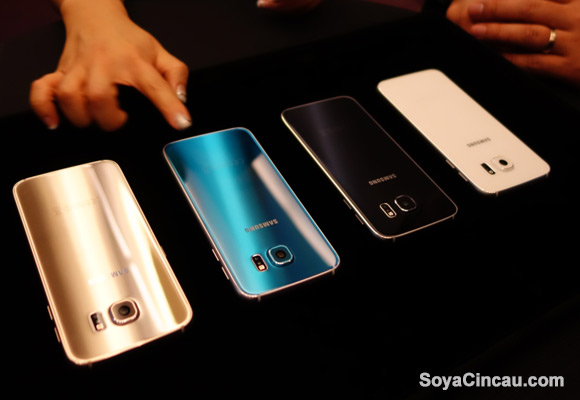
There are total of 4 colours available – Blue, White, Gold and Black. The Galaxy S6 edge shares the same colour options but it gets an exclusive dark Green option which we liked the most. For the display, the Galaxy S6 edge has a curved area on both the left and right, but compared to the Galaxy Note Edge, it doesn’t extend all the way to the sides, which makes it possible for side button placements, for better single handed use.
The front retains the iconic Samsung home button that’s accompanied with the usual recent apps and back buttons. On the left, it gets a volume rocker with a metallic finish while the right gets a power/wake button.
Like most new flagship smart phones, it now uses nano-SIM with the slot located on the right for the Galaxy S6 while the Galaxy S6 edge is placed right at the top. At the top side, the device looks clean with a infra-red blaster at the top with a secondary mic, while the bottom of the device houses a microUSB port, headphone jack and a loud speaker grill, which claims to be 1.5X louder than its predecessor.
Looking at the back, the body colour glass dominates the whole surface with a centre mounted protruding camera, which is more exaggerated than the latest iPhones. The heart rate sensor is now placed vertically on the right, similar to the Galaxy Alpha. Dimension wise, both models are lighter and thinner than the current Galaxy S5 despite the usage of heavier materials such as metal and glass. The standard S6 is 6.8mm thick and it weighs 138 grams, while the edge version is slightly thicker at 7.0mm but it manages to trim some fat, weighing in at 132grams.
Hardware
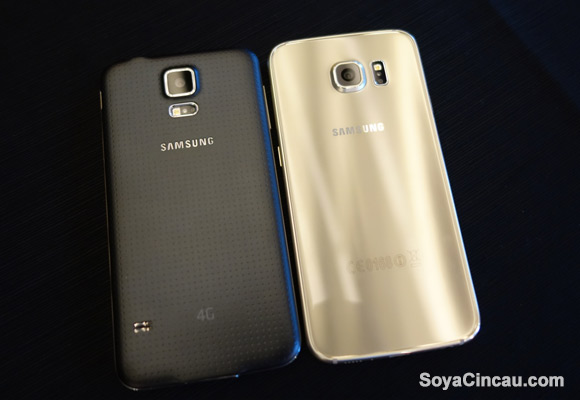
Both the Galaxy S6 and Galaxy S6 edge are identical. The only difference is the “double edge” display, a slightly larger battery and dimension differences on the Galaxy S6 edge version. The front gets a 5.1” Quad HD (2560×1440) Super AMOLED display which pushes an impressive pixel density of 577 ppi (pixels per inch). For better outdoor visibility, the screen has a max brightness of 600cd/m2.
Powering the device is the world’s first 14nm mobile processor –Samsung’s own 64-bit (Cortex A-57 @2.1GHz + Cortex A-53 @ 1.5GHz) Octa-Core Exynos 7420 processor. With a much finer 14nm process (Snapdragon 810: 20nm), this provides better performance while having greater power efficiency in theory. It appears that Samsung is confident with their in-house supply that they have decided to drop a Qualcomm variant altogether.
To remove any potential speed bumps, the Galaxy S6 will be having 3GB of LPDDR4 RAM and a much faster UFS 2.0 flash memory for its on-board storage that claims to be 30% faster than standard eMMC 5.0 flash that’s being used on most high-end smart phones in the market. Storage wise, Samsung has killed the tiny 16GB option and the new flagship will come in either 32GB, 64GB and a whopping 128GB capacity version.
Unfortunately with its unibody design, they had to forego a microSD slot. If you need more space, Samsung is offering additional 100GB of OneDrive cloud storage for free for 2 years.

Imaging is one of the key highlights of the Galaxy S6. The camera on the current Galaxy Note 4 is already impressive and Samsung has taken it further with a dual f/1.9 bright lens for both front and back, as well as support for Auto Real Time HDR. The main camera is a 16MP shooter assisted with Optical Image Stabilisation while the front gets a larger 5MP unit.
To capture moments instantly, the Galaxy S6 is able to launch the camera app in 0.7 seconds by simply double tapping the home button quickly. This can be trigger in any situation even while the device is in sleep. Too bad all it does is to launch the app and there’s no way to enable a direct Sleep to Snap function. According to Samsung, they had decided not to do so to avoid accidental shots, but we reckon it would be great to have that option available.
Since we’re on the home button, Samsung has improved its fingerprint functionality with a 360 degree one touch method, similar to the iPhone’s Touch ID and Huawei Ascend Mate 7. This allows you to unlock the device by tapping your finger in any direction, which is a whole lot better than the old school downward swiping motion.
With a Quad HD display and a more powerful processor, we would typically expect larger battery capacity. Surprisingly Samsung downsized to a smaller 2,550mAh unit for the Galaxy S6 and a slightly bigger 2,600mAh unit for the S6 edge. As comparison, the Galaxy S5 has 2,800mAh capacity while the older S4 has a 2,600mAh.
According to Samsung, its processor, RAM and storage have been tweaked for greater power efficiency and it should be able to provide a similar battery life as the current Galaxy S5. To get you up and going, the Galaxy S6 also receives Adaptive Fast Charging which does 0-50% charge in 30 minutes. A quick 10 minute charge apparently is good enough to provide 2 hours of HD video playback.
Also for the first time, the Galaxy S6 and Galaxy S6 edge will support native wireless charging. To make it compatible with a wide range of chargers, it will support both WPC/PMA wireless standards. Obviously this would be better for convenience and if you’re in a hurry, the good old USB cable would be a quicker option.
What’s with the edge?
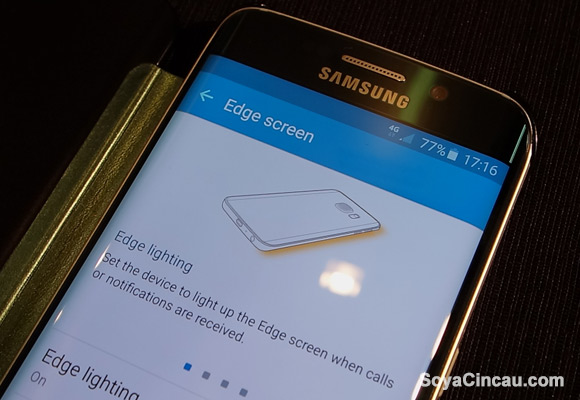
For the Galaxy S6 edge, the “edge” functionality is rather limited compared to the Galaxy Note Edge. You don’t get a dedicated shortcut or dynamic panel bars, which is obviously hindered with its smaller curve extension. Instead, the main highlight is its “People Edge” functionality to keep up to 5 of your favourite contacts within an edge reach.
When enabled, a slight colour tab appears on the side which you can drag to bring out your contact to view missed calls and you can call or message tap instantly with a single tap. Whether you’re left or right handed, you can move the active edge to your preferred side. When the display is asleep, it also doubles up as a night clock and an info stream to peek on missed notifications.
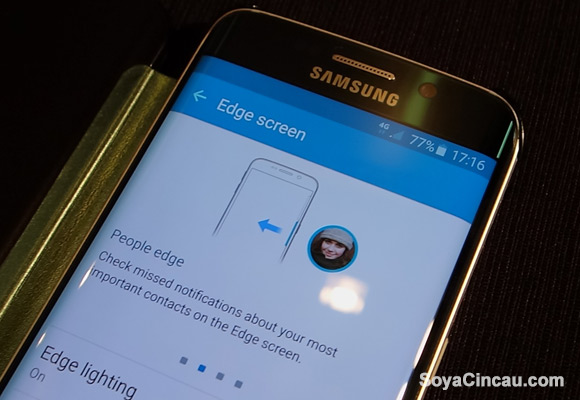
Another gimmick which has been teased before the launch, is the glowing edge light. For each contact, you can assign a unique colour for easy identification. During meetings, when the Galaxy S6 edge is facing down, the edge will flash the colour of your contact, which gives you a visual alert of who’s calling, without revealing it on the front screen. Should you decide to reject the call, you can press and hold onto the heart rate sensor, and it would hang up the call and send a preset message to the said contact.
Conclusion
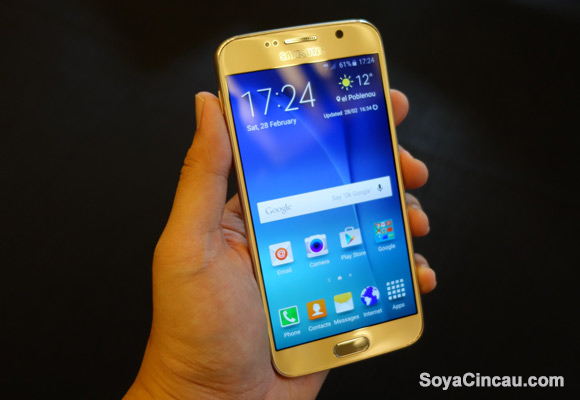
The Galaxy S6 and the Galaxy S6 edge is a positive step forward for Samsung and it looks like they have nailed the exterior and the hardware side of things. The new polished metal frame, choice of having glass on both sides and an instant Touch-ID like unlock, could also be seen as copying Apple, and that’s a perception that Samsung would want to tackle. The premium design is something you should see in the flesh, as it is something that you would need to hold and feel first hand to appreciate it.
For the Galaxy S6 edge, it doesn’t differ much from the standard Galaxy S6 and it would be tough to justify it for the limited edge functionality if Samsung decides to charge a huge premium like the Galaxy Note Edge over the standard Note 4. For the Malaysian market, we expect Samsung to offer the base 32GB storage option for the standard Galaxy S6 and perhaps they might offer the S6 edge locally with a larger 64GB or 128GB storage capacity as a key differentiation. In terms of availability, do expect Malaysia to be among the first countries to get it, and it could be as early as end of this month and it will be available starting 10th April.
Photo Gallery
Samsung Galaxy S6
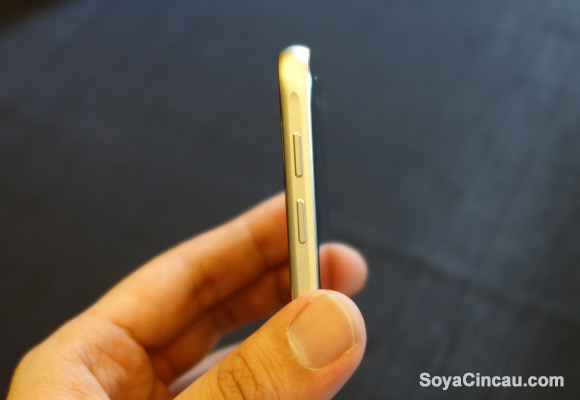
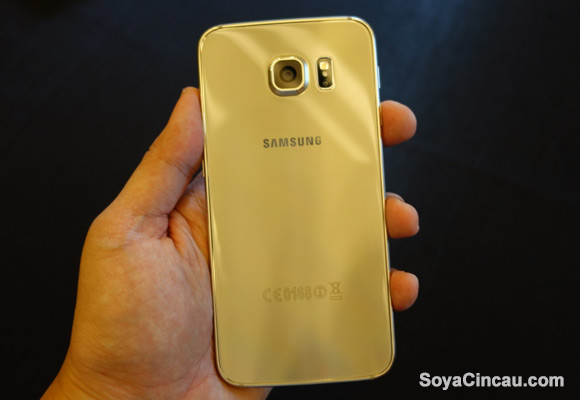
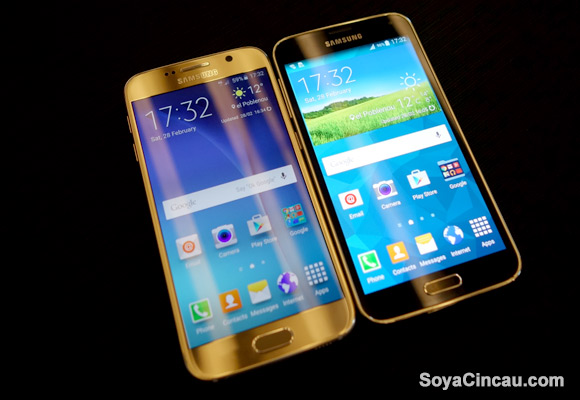

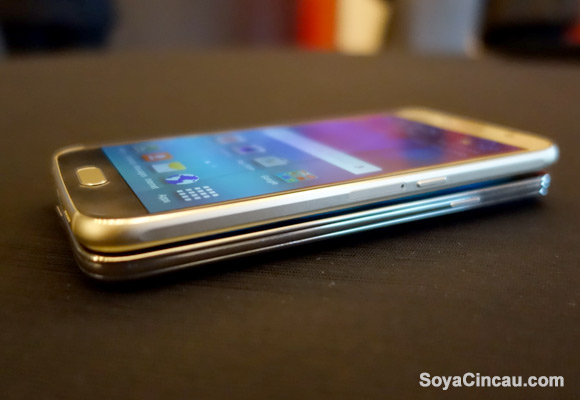
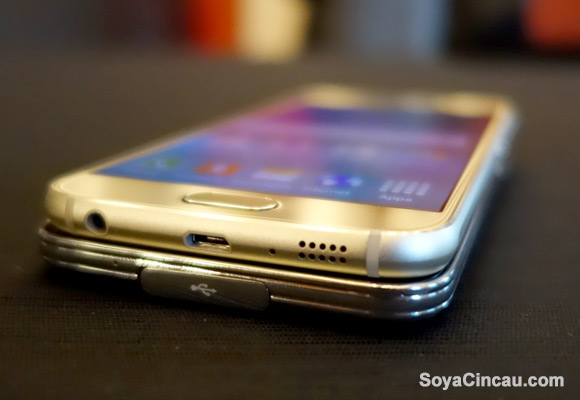

Samsung Galaxy S6 edge
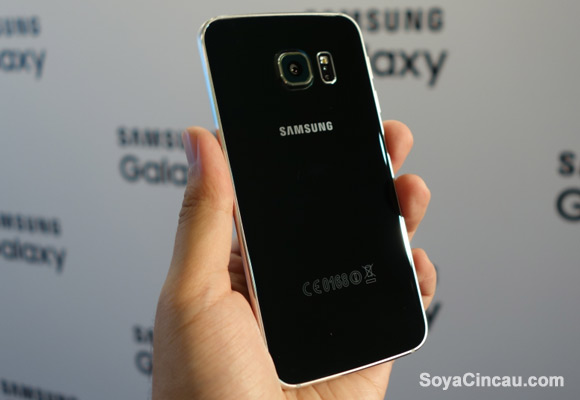

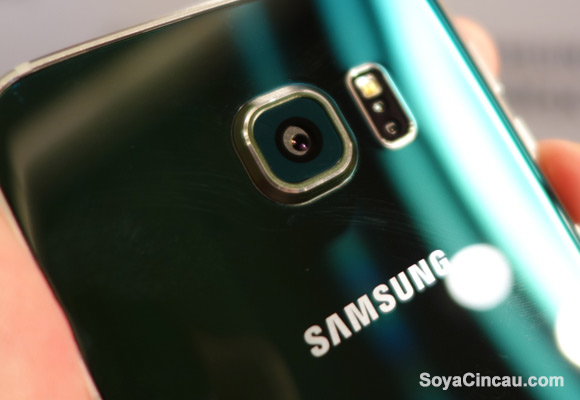
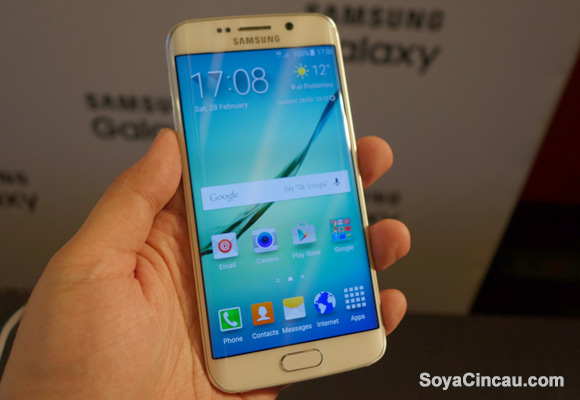

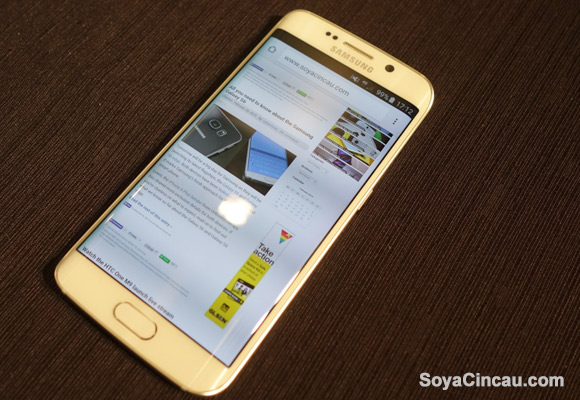
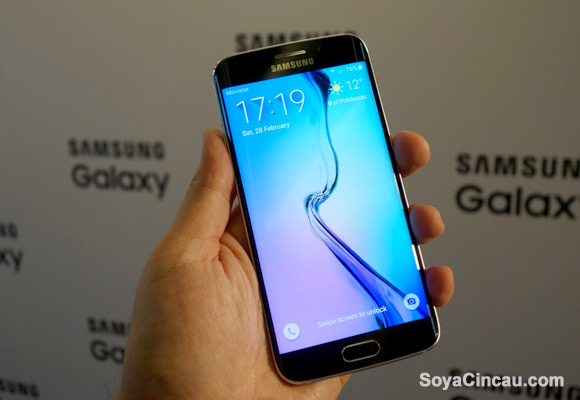
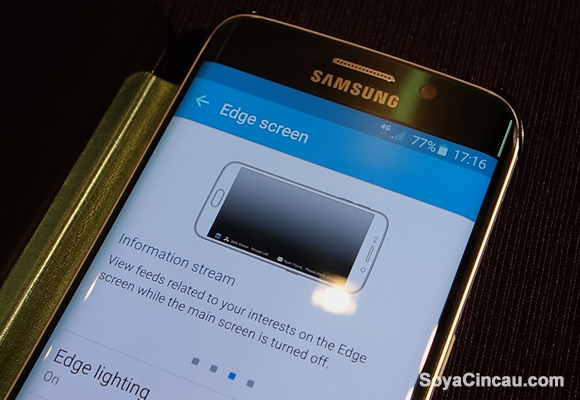

Samsung Galaxy S6 & Galaxy S6 edge Comparison

